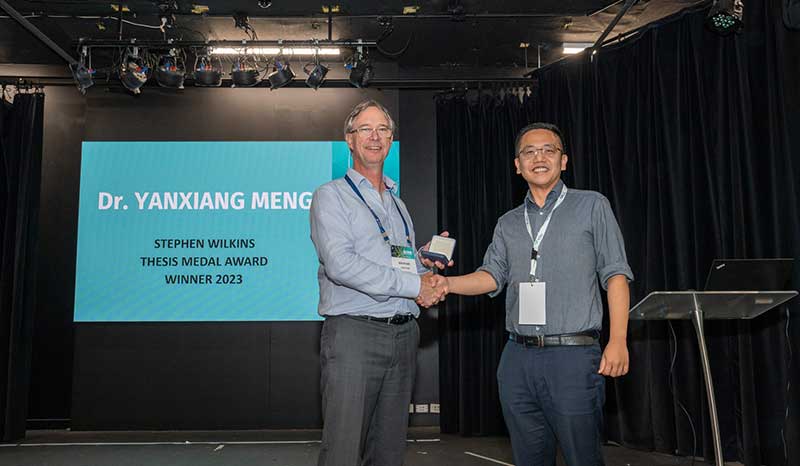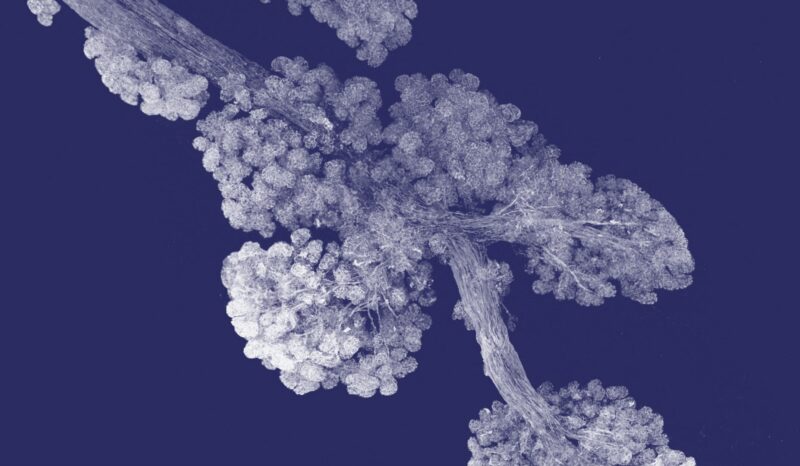A proud WEHI alumnus, Dr Yanxiang Meng’s future shines brightly as the recent recipient of the prestigious Stephen Wilkins Medal for his outstanding contributions to the field of structural biology and X-ray crystallography. Dr Meng’s journey from postdoc structural biologist to his current role as an R&D scientist at a biotech startup is testament of the transformative power of research and innovation.
The Australian Synchrotron Stephen Wilkins Thesis Medal is awarded to the PhD graduate with the best thesis using ANSTO facilities in their research. Dr Meng’s research at WEHI and the University of Melbourne focused on unravelling the molecular mechanisms behind a form of programmed cell death that plays a role in the development of a range of inflammatory diseases.
By using synchrotron techniques, including macromolecular crystallography and small-angle X-ray scattering, Dr Meng, was able to map for the first time the structural complexities of RIPK3-mediated necroptosis in human cells.
The Australian Synchrotron played a pivotal role in his structural biology studies. Dr Meng harnessed the power of the MX1 and MX2 beamline for X-ray crystallography studies, solving four novel co-crystal structures of protein complexes central to necroptosis. The SAXS/WAXS beamline allowed him to explore the makeup of these protein complexes in solution, shedding more light on the intricate molecular dance of cell death.
Dr Meng’s investigation into necroptosis and the activation mechanism of the MLKL protein has unveiled critical checkpoints within the cell death pathway. His findings provide essential insights into the detailed activation mechanism and structural relationships between the proteins MLKL and RIPK3.
By demystifying the molecular processes underpinning necroptosis, his work lays the foundation for potential therapies to treat diseases arising from the dysregulation of this cellular security system. Understanding how MLKL switches from an inactive to an activated state opens avenues for targeted treatments, offering hope for patients suffering from inflammatory diseases.
“The understanding of the molecular processes underpinning necroptosis is crucial because, by knowing how the security system operates, we can better find ways to control it if it malfunctions,” he said.
“In essence, the researchers have decoded some of the signals and sequences in this security system, which can pave the way to potential therapies to treat diseases that arise when the system goes haywire.”




